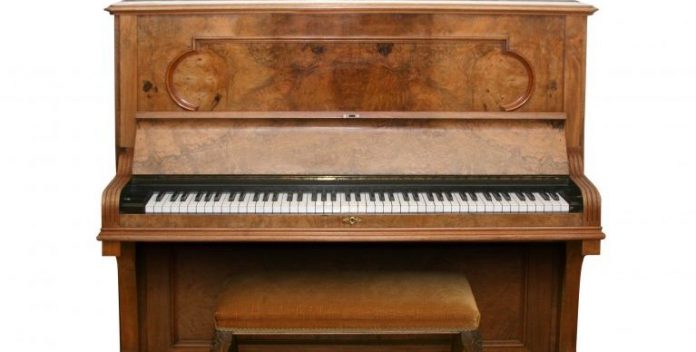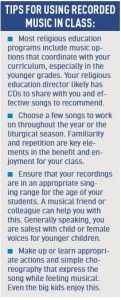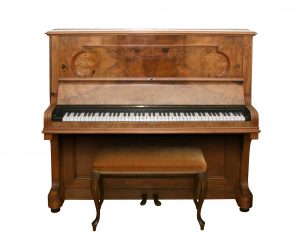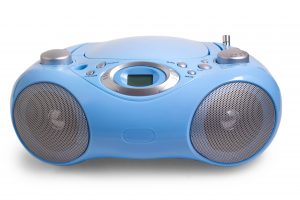
I can’t carry a Tune — How can I use music to pray with students?
KATE DANELUK
Years ago, music was considered such an important part of a child’s education that one had to exhibit proficiency in singing and piano in order to be a certified teacher. This was considered even more vital in religious education.
One of my father’s favorite stories growing up in a small rural town was of Katharine. Katharine felt called to teach Sunday school and took the responsibility very seriously, but she was troubled because she could not play the piano. She prayed and prayed that God would help her teach the children and somehow provide music for her class. When she walked into the classroom, she sat at the piano and played, accompanying the class in their hymns and songs perfectly. From that day on, miraculously, Katharine could play the piano, but only when she was teaching Sunday school, leading her students in prayer.
Now, if you feel a bit insecure leading a group musically, your students can still benefit from the power that music brings to prayer, and it doesn’t have to take a miracle. Here are five things you should do to ensure your students get the benefit that music offers in the religious education classroom.
PRAY
Take a page out of Katharine’s book and pray about this. Specifically, you may want to lean on your guardian angel, who is surely eager to guide you in leading your students to Christ. Consider that, in Scripture, the angels sing their heavenly prayers. Who better to help you as you try to incorporate music into your classroom? Perhaps only St. Cecelia, patron saint of music and musicians.
PLUG IN
Teachers have been doing this since the record player became a staple in the classroom. I remember Sr. JoEllen carefully lining up the needle to play our favorite selections from the Hi God album in first grade. Sister carried a tune just fine, but she had us all get up from our desks and dance along to the record while we sang with simple choreography. The music teacher in me must mention that if you can sing or play an instrument, please avoid using the crutch of recorded music. But if you struggle in this area, singing and dancing along to a recording is monumentally better than avoiding music altogether. 
DELEGATE
If your students are older, you are likely to have some budding musicians who would be happy to lead the class in song or provide accompaniment. Otherwise, see if a musical parent would be willing to spend five minutes at pick up or drop off to lead the children in musical prayer. A parent may come into class weekly or monthly for longer lessons depending on their availability and the frequency of your class.
LISTEN
Be intentional in the music you choose for background music during independent work or quiet time. Additionally, teach children to carefully listen to prayerful recorded music. Look for thoughtful and catechetically sound contemporary artists, powerful classical pieces like Handel’s Messiah, and Gregorian chant.
OUTSOURCE
Trade talents with a musical colleague. Perhaps you could combine classes occasionally. Another option is to tag team teach, particularly if you teach two sections of the same grade. Each of you prepares half the lesson, and you switch classrooms halfway. You may also ask your religious education director, parish music director, or school music teacher to help you with a guest appearance.
So never fear if you are tonally challenged. Like Katharine, step forward in faith and love with a genuine desire to serve the Lord. He will help you. You have many options to bring the priceless gift of music to your students.
KATE DANELUK is an author and speaker on education and Catholic ministry and is the creator of the Making Music Praying Twice
Image Credits: (L-R, T-B): JESUS CERVANTES/SHUTTERSTOCK,
MAXIM IBRAGIMOV/SHUTTERSTOCK
This article was originally published in Catechist magazine, January 2018




